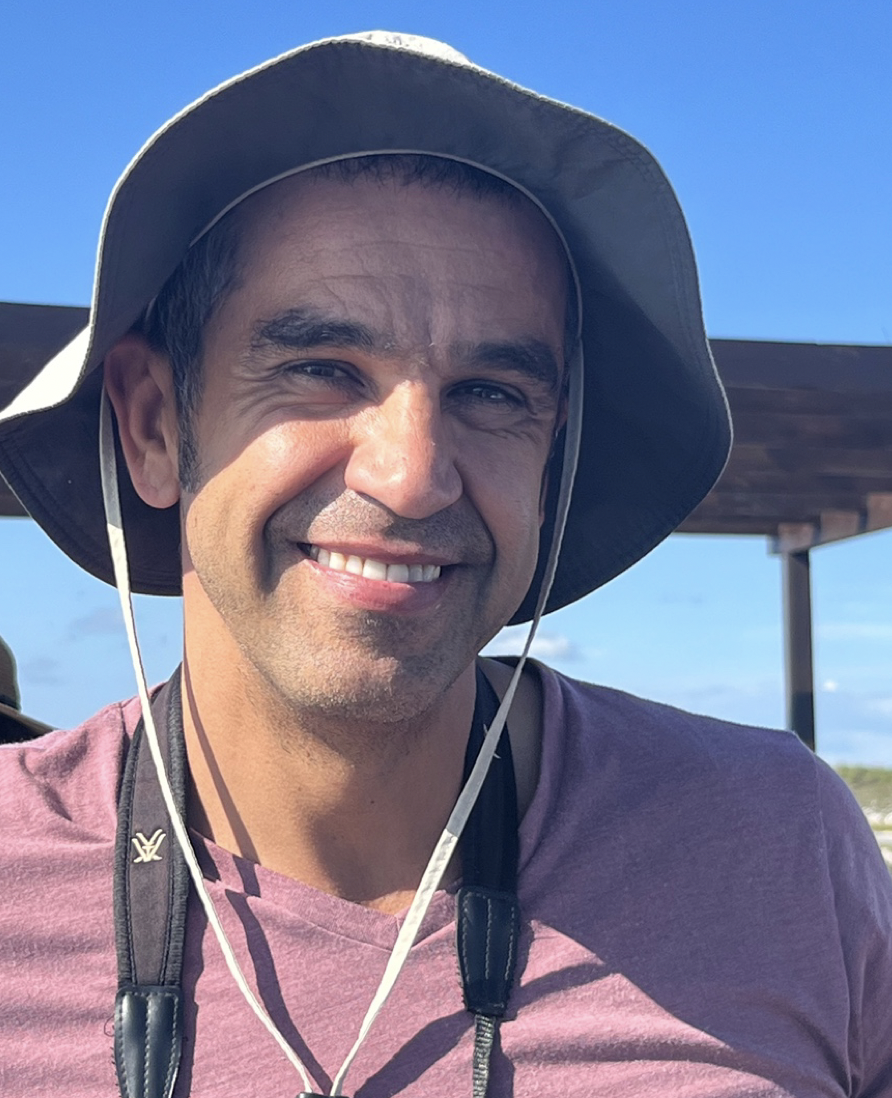Launching Laguna de Maya
In partnership with marine biologists and graduate students from the University of Havana, and led by internationally renowned artist Mara G. Haseltine, Art Director and Founder of the Geotherapy Institute in partnership with Cresta and the Global Coral Reef Alliance, we are merging science and art to regenerate coral ecosystems through living sculptures, coral gardening, and immersive underwater installations that double a pilot -scientific projects for mass restoration efforts.
Our first initiative, Laguna de Maya Coral Restoration Project in Cuba is a prototype project for all of the projects to follow at the Geotherapy Institute for Art and Field Sciences.
Laguna de Maya is a hidden gem just 1.5 hours east of Havana in the historic region of Matanzas as launches with a coral nursery that fuses two sustainable reef restoration techniques—BioRock mineral accretion and ceramic reef structures using larval propagation methods—both avoid plastic and traditional concrete, ensuring long-term ecological harmony.
Collaborative Science and Art Hub
Laguna de Maya is home to one of the last remaining hard coral reefs with healthy reef building hard corals intact Elkhorn Coral ( Acrapora palamata) and Staghorn coral (Acopora Cervicornis) in the region—a rare and critical marine ecosystem now under threat. Scientists warned that mass coral bleaching occured as early as August 2025, driven by rising ocean temperatures and human activity.
Time is of the essence but there is still a window to act—and to do so beautifully. – Mara G. Haseltine, Founder of the Geotherapy for Art and Field Sciences
Laguna de Maya: A coral nursery as a functional eco-art project and site for coral restoration – an underwater sanctuary 1.5 hours east of Havana – Cuba.
Restoring it now is essential for long term health of all reefs in the region.
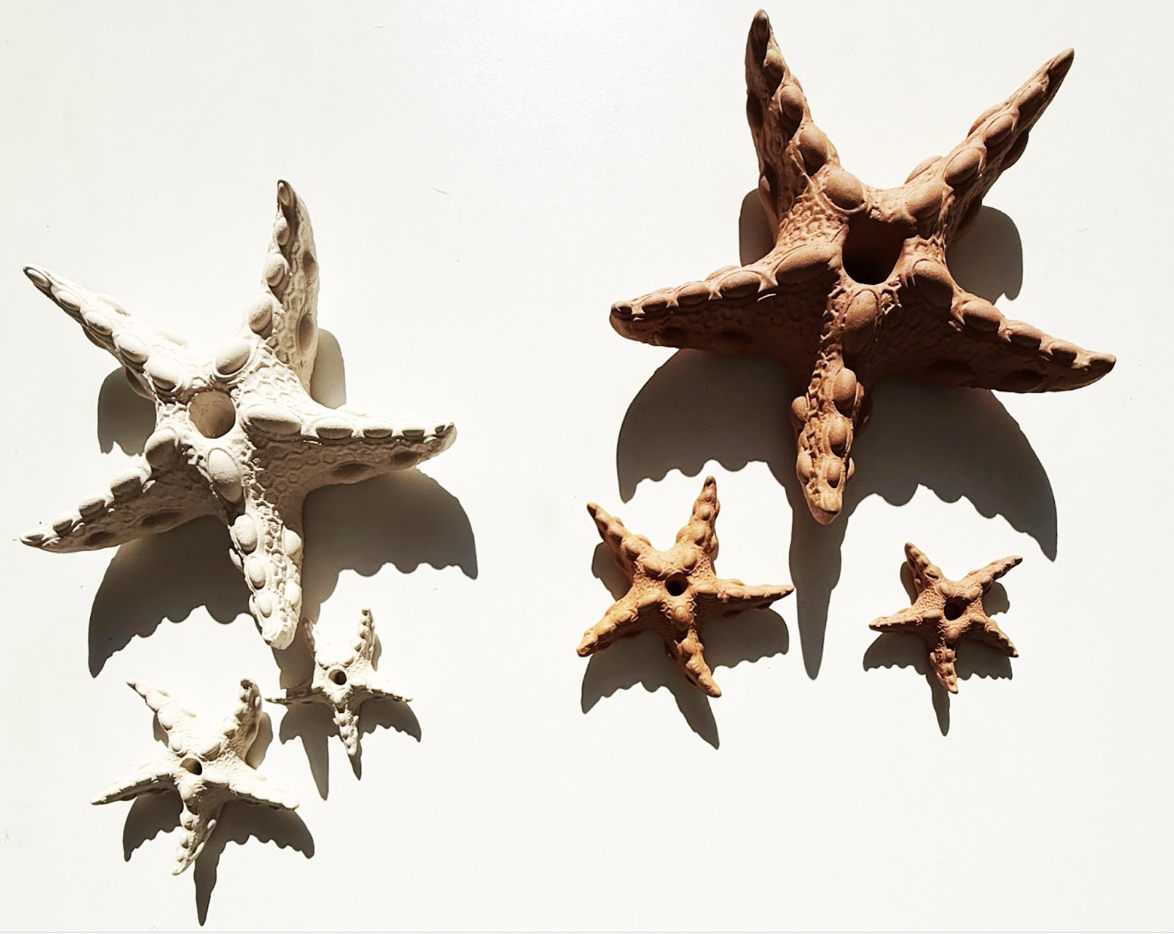
Geotherapy begins here. Discover the Stars for the Ocean.
These high fired ceramic stars, and terracotta low fire ceramics and are prototypes for substrates for the coral larval propagation showcases a design that faithfully mimics the intricate shapes and textures of natural coral skeletons, complete with their nooks and crannies.
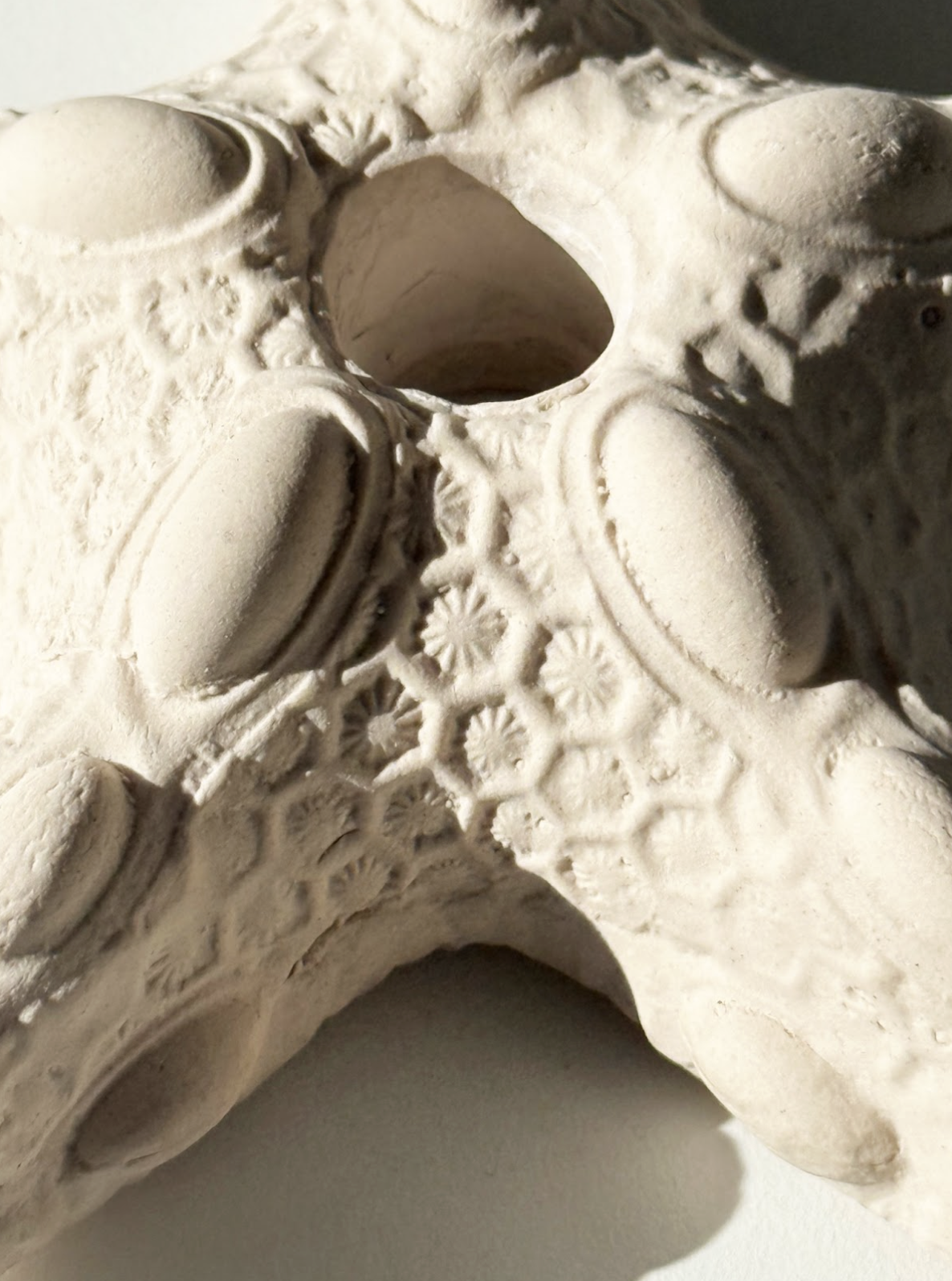
No plastic. No concrete. Just regenerative design.
By replicating these complex structures, the hard fire ceramic substrate provides an ideal environment for coral larvae to settle and grow, merging artistic precision with scientific restoration. The high fire substrates in ceramic are less porous and therefor have longer longevity underwater and offer a texture that is non-acidic unlike traditional concrete. The hole in the middle of the design is so that that can be easily attached to coral nursery structures while the gametes have time to mature and are ready to be placed on degraded hard coral reefs, while the star shape fits into the nooks and crannies of hard coral reefs they are placed on.
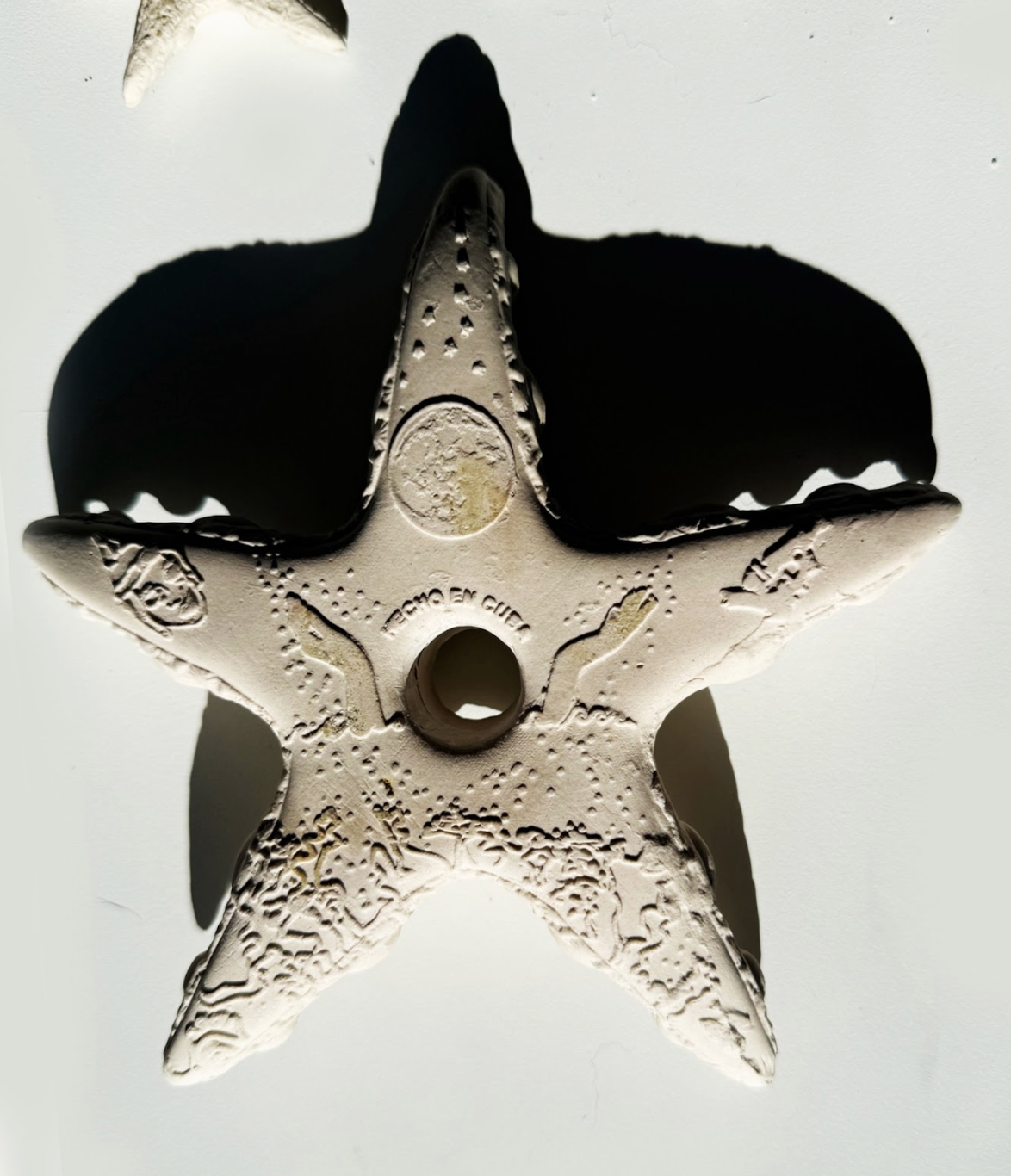
Explore how Laguna de Maya is reimagining coral futures—through nature, culture, and collaboration.
Hosted in collaboration with Cuban and international partners, these field-based programs will invite artists, scientists, and students to create, observe, and participate in restoration efforts. Rooted in biomimicry, traditional ecological knowledge, and Cuban coastal heritage, this novel reef architecture is both functional and poetic—an underwater sanctuary that restores marine ecosystems while inspiring human connection to the sea.
The “Coral Nursery”
This artistic endeavor showcases a pioneering approach to coral conservation, blending scientific principles with sustainable materials that do not utilize plastic or traditional concrete methods.
The design for the ‘Coral Nursery’ was inspired by the Distephanus boliviensis, unicellular phytoplankton, whose flat bottom enables it to drift gracefully and slowly through the photic zone.
Its study shape with flanges and provides a stable environment for reef restoration and wave attenuation while simultaneously allowing for water circulation which is vital for feeding coral polyps micro-nutrients as they flow by in the water. The nursery would act as both a structure to affix the coral larval substrates with a structure that would also act as a wave attenuator protecting fragile shorelines
A pilot project
The nursery would act as both a structure to affix the coral larval substrates with a structure that would also act as a wave attenuator protecting fragile shorelines.
The “Coral Nursery” novel design for a coral nursery the artist plans to implement integrating two coral restoration strategies. It combines a Biorock, coral larval propagation. The Biorock method in this unique design is combined with a coral sexual larval propagation technique for the first time.
Biorock is a groundbreaking technology that helps coral reefs grow faster and survive longer—even in the face of climate change. Using a low-voltage electrical current (completely safe for marine life), minerals naturally found in seawater build up on underwater metal structures, forming a limestone or calcium carbonate surface—the same material corals use to grow their skeletons. When young corals are placed on these structures, they grow up to six times faster, are more resistant to bleaching and disease, and have higher survival rates than in natural conditions. This method turns restoration sites into living, self-sustaining reef systems that support marine biodiversity and protect coastlines.
Coral sexual larval propagation technique that seeds star-shaped substrates with genetically robust, cross-fertilized coral gametes. Coral larval propagation is a cutting-edge technique used to restore damaged reefs. During coral spawning—when corals release eggs and sperm into the water in or around the full moon in the warmer months—scientists collect the tiny reproductive cells, fertilize them, and raise the coral larvae in protected environments. Once they’re strong enough, these baby corals are released back onto degraded reefs to help rebuild them. Thermoclines, or layers in the ocean where the temperature shifts quickly with depth, play a key role in where and how these larvae survive. By understanding thermoclines, scientists can choose the best depths to release the larvae—where the water conditions give them the greatest chance to grow, settle, and thrive. These two methods both mimic nature but gives young corals a head start in a changing ocean in the Age of the Anthroprocene.
Testimonials
I founded the Geotherapy Institute for Art and Field Science on the principal that the most effective way to change our cultural narrative is to infuse the field sciences with art to inspire not just scientists but the general population to rise to the occasion- the age of the Anthroprocene. To understand the natural world and be inspired by it, is to learn to care for it a develop bioethics that nurtures not only creativity but a love for our shared Planet.
Mara G. Haseltine
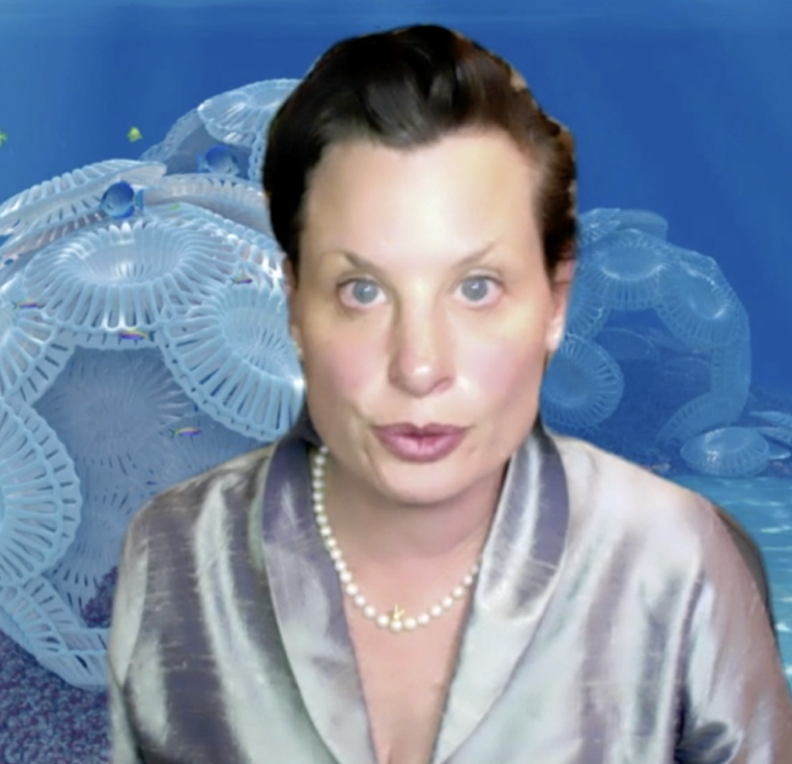
Elkhorn and staghorn corals, formerly the most abundant in the Caribbean, are now functionally extinct in almost all of the region due to global warming. The only place in the Caribbean that escaped devastating high temperatures in 2023, 2024, and 2025 were the reefs of Playa Coral in the Bay of Matanzas, Cuba, which has the last healthy coral reefs left in the region. Protecting and propagating these corals is now the most important conservation priority in the Caribbean.
Dr Tom Goreau
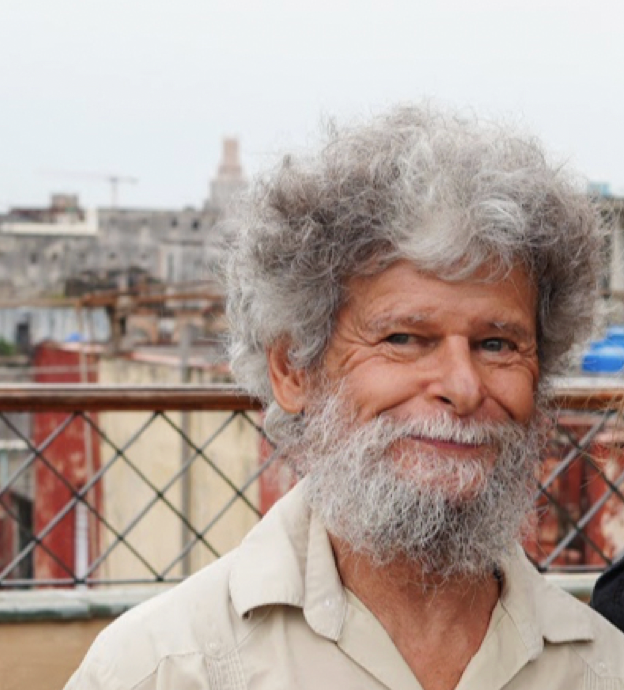
Coral seeding, or sexual coral restoration, is intimately timed to natural cycles. Most coral species spawn only once a night and in close proximity to the month’s full moon which requires patience and precision. However, once wild colonies release their spawn, these eggs and sperm can be inseminated by staff and returned to reefs that are in need of genetically diverse polyps. A 2024 research paper Margaret Miller of SECORE International, hints that polyps that have undergone assisted fertilization may be even stronger than naturally fertilized corals.
Fernando Bretos
